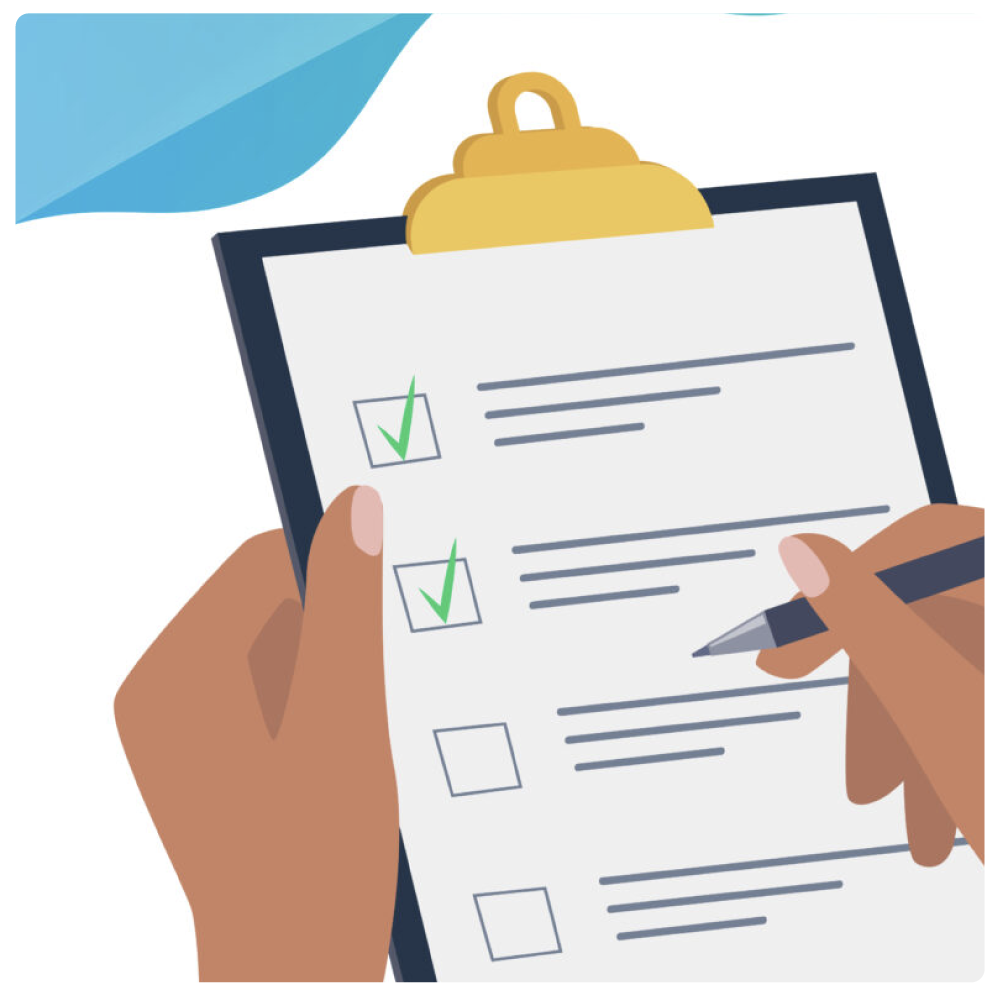The ultimate guide to lead generation for technology developers

Lead generation has always been a crucial element for growing businesses, but for technology and engineering developers, it’s more than just gathering contacts – it’s about using advanced tools and automations to streamline and optimize the entire process. From capturing leads to managing them through automated data management and validation processes, the right approach can drastically improve lead quality and conversion rates.
In this guide, we’ll explore the essential components of lead generation specific to technology and engineering developers, emphasizing the use of automation, integration with marketing tech stacks, and data-driven strategies.
Automated data management for lead generation
For technology developers, creating a seamless, automated lead generation process is vital to achieving scalability and efficiency. The ability to capture, validate, enrich, and manage leads automatically can be the difference between a cluttered pipeline and a high-functioning sales engine.
What is automated data management?
Automated data management refers to the use of technology tools and systems to collect, store, and manage lead data without the need for manual intervention. For developers, this involves integrating tools that automate the capture of leads from various channels and ensuring that the data is organized, stored securely, and ready for immediate use.
Why it matters
- Efficiency: Manual data entry and management can be prone to errors and is time-consuming. Automated systems ensure data is accurate, complete, and accessible in real time.
- Scalability: Automation allows you to handle higher volumes of data, meaning your lead generation process can scale as your business grows.
- Data accuracy: Proper automated data management ensures that data integrity is maintained, leading to better decision-making.
How to implement automated data management
- Choose the right CRM system: Tools like HubSpot, Salesforce, or Zoho allow for seamless automated data management, capturing and organizing leads from various touchpoints.
- Integrate with existing systems: Ensure your CRM integrates with other marketing and sales tools for real-time data sharing and processing.
- Use automation for data clean-up: Implement data deduplication and error-checking processes to keep your lead database accurate and up-to-date.
LeadsBridge
LeadsBridge – one of ActiveProspect’s products – automates your customer acquisition process by seamlessly integrating major ad platforms with your existing marketing technology. With over 380 integrations, you can drive new revenue and increase efficiency by syncing leads in real time, tracking online and offline conversions, and targeting custom audiences.
LeadsBridge partners with the top global advertising platforms, including Meta, Google, LinkedIn, TikTok, Amazon, Snapchat, and Pinterest to provide unique benefits to users.
With LeadsBridge automated integrations you can:
- Gain efficiency by ending slow and error-prone lead syncs.
- Optimize return on ad spend by precisely targeting and re-engaging your ideal audience.
- Enhance reporting by measuring the true sales impact of your online campaigns.

Automated lead enrichment for more effective campaigns
What is automated lead enrichment?
Automated lead enrichment involves using technology to append additional information to leads automatically, turning raw data into detailed lead profiles. This process adds value by providing deeper insights into each lead, such as their company size, job title, industry, and engagement history.
Benefits of automated lead enrichment
- Improved targeting: Enriched leads give developers more context, enabling more personalized and targeted outreach.
- Increased conversion rates: Leads with more complete profiles are easier to segment, nurture, and convert into customers.
- Reduced manual work: Automation eliminates the need for manual research and data entry.
How to automate lead enrichment
- Leverage data enrichment tools: Platforms like LeadConduit provide automated lead enrichment services.
- Integrate with CRM: Ensure your lead enrichment tool integrates with your CRM to automatically append data as leads enter your system.
- Use AI for predictive enrichment: Artificial intelligence (AI) can predict and fill in missing details, further enriching your lead profiles in real time.
The role of automatic lead validation in quality assurance
What is lead validation?
Lead validation is the process of ensuring that leads collected are accurate, complete, and genuine. Automatic lead validation refers to using algorithms and automated processes to filter out invalid or low-quality leads, ensuring that only the best leads make it into your pipeline.
Why lead validation is essential
- Increases lead quality: Validating leads ensures that your sales team only works with high-potential prospects.
- Saves time: Automatic validation cuts down on the time spent manually reviewing and filtering out bad leads.
- Reduces wasted resources: Focusing on high-quality leads improves your ROI by ensuring marketing and sales efforts aren’t wasted on invalid data.
How to automate lead validation
- Set validation rules: Create automatic rules for lead validation based on criteria such as correct email format, company size, or location.
- Integrate with email validation tools: Use email validation services to automatically check and verify email addresses.
- Use AI for lead scoring: AI-driven lead scoring tools can help automatically rank and prioritize leads based on their likelihood to convert.
LeadConduit
LeadConduit – another one of ActiveProspect’s products – streamlines your lead acquisition process to efficiently acquire customers at scale. Custom lead flows automatically enhance and filter leads in real time to deliver the highest-quality prospects to your CRM or lead buyer.
LeadConduit empowers companies to boost ROI, minimize fraud, and enhance efficiency by optimizing lead acquisition and distribution. Say goodbye to manual errors as you standardize, manage, and synchronize data seamlessly across various lead vendors and tech stacks.
Thanks to over 100 integrations and add-ons already available within LeadConduit, you can:
- Increase ROI by validating, filtering, and rejecting unwanted leads, to only accept leads that match your requirements.
- Eliminate fraudulent leads and known litigators by verifying lead identity and contact information.
- Increase compliance by instantly checking a lead against Do Not Contact (DNC) lists.
- Increase speed-to-lead with real-time automated workflows.
- Onboard, test, and evaluate new vendors quickly and use customizable reports for monitoring vendor performance.
- Avoid duplicate leads by checking a lead against any list.

Best lead management processes with automation
Effective lead management is the backbone of a successful lead generation strategy. Automation in lead management ensures that leads are organized, nurtured, and moved through the funnel seamlessly.
Key steps for best lead management
- Automated lead assignment: Automatically route leads to the appropriate sales reps based on predefined criteria.
- Lead scoring and segmentation: Use automation to score leads and segment them into different categories based on their potential value.
- Follow-up workflows: Automate follow-up emails, notifications, and touchpoints to ensure timely interactions with leads.
Automating lead management funnels and reporting
Why automate lead funnels?
Automating lead management funnels ensures that every lead moves through the sales cycle smoothly, from the initial point of contact to conversion. Automation ensures no lead is lost or forgotten, and that timely actions are taken to push leads toward conversion.
Key benefits
- Real-time reporting: Automated funnel reports provide instant insights into where leads are in the funnel and how close they are to converting.
- Better forecasting: Automated reporting tools give developers data to accurately forecast sales and revenue based on lead activity.
Automating the customer acquisition process
Benefits of automating customer acquisition
- Faster lead conversion: Automated workflows enable quick responses to lead actions, reducing the time it takes to convert a prospect into a customer.
- Personalized engagement: Use automation to send personalized messages based on lead behavior and engagement data.
Key automation strategies
- Automated onboarding: Use automated sequences to onboard new customers, providing them with the necessary resources and support.
- Retargeting campaigns: Set up automated retargeting campaigns to engage leads who haven’t converted yet.
The power of integrated marketing technology stacks
What is an integrated marketing technology stack?
An integrated marketing technology stack combines various tools, such as your CRM, email marketing software, analytics platforms, and more, into a unified system that shares data seamlessly.
Benefits of an integrated stack
- Seamless data flow: Integrated systems ensure data is shared across platforms in real time, reducing silos and improving efficiency.
- Better decision-making: With all tools connected, developers can access comprehensive data to make informed decisions.
- Improved campaign performance: Integrated stacks allow you to manage and optimize marketing campaigns across multiple channels.
Conclusion
For technology developers, automating lead generation is key to scaling customer acquisition processes. By leveraging automated data management, lead enrichment, validation, and an integrated marketing tech stack, developers can optimize every step of the lead generation funnel.
Thanks to ActiveProspect’s LeadsBridge and LeadConduit products, developers and engineering teams can start doing that, and more. The result? Higher lead quality, faster conversion rates, and a more efficient marketing-to-sales pipeline.






